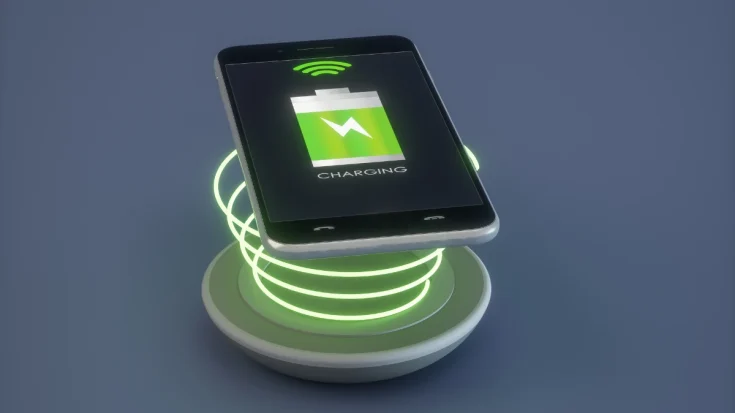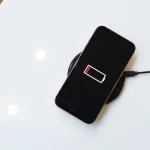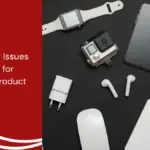The convenience of using technology is the main thing in today’s practical era. Technological innovations that answer this are some technological devices that no longer use cables, one of which is wireless charging.
The absence of cables in wireless charging makes use more practical, makes the table tidier, and reduces the risk of short circuits.
This article will outline information about wireless charging from its definition, how it works, advantages, to its regulation in Indonesia.
Also Read
Table of Contents
What is a Wireless Charging Definition?

Wireless charging definition is a modern charging technology that allows electronic devices to charge without using wires. Technology that uses this charging is usually smartphones, smartwatches, or earbuds.
This charging uses electromagnetic induction on the receiving device whose electrical energy is transmitted wirelessly from the data source. This charging allows a neater and more minimalist look because the device is installed without any dangling cables.
How Does Wireless Charging Work?
In principle, wireless charging works by means of electromagnetic induction. This device uses two coils, each coil has a different transmitter between the charging coil and the receiving coil. Here’s how it works in detail:
- Charging pad connected to electric current: The charging pad has a coil that is connected to a power source.
- The coil emits a magnetic field: The electricity delivered by the charging pad generates an isolated magnetic field.
- The receiving coil receives the field: The receiving coil captures the magnet field emitted by the sender.
- The magnetic field is converted into an electric current field: The magnetic field captured by the receiving coil is converted into an electric current.
The Advantages of Wireless Charging

Wireless chargers have several advantages ranging from reducing cable dependency, being able to charge multiple devices at once, to minimal risk of short circuit. Here are some of the advantages you need to know:
1. Reduce cable dependency
The advantage of wireless charging is that it reduces cable dependency. With this charging, only the charging pad is connected to the electricity, the device you want to charge is simply placed on the pad. This makes your work more rapid and clean with not many cables.
2. Easy to use
Easy to use is another advantage of wireless charging. With this charging, you simply place the device on the charging pad then the device can charge without the need to plug the cable back in.
3. Charging multiple devices at once
The most amazing advantage of wireless charging is its ability to charge multiple devices at once. Some of the latest wireless charging products allow charging devices such as smartphones, smartwatches, and earbuds, simultaneously.
4. Prevents overcharging
Most conventional charging is not yet equipped with an auto cut-off feature like wireless charging. This feature allows charging to stop automatically when the battery charge is full. So concerns about overcharging and causing battery damage can be avoided.
5. Minimal risk of short circuit
Another advantage of smart charging is the minimal risk of short circuits. By not using cables, this charging reduces the risk of electric shock or short circuit due to damaged or chipped cables.
Wireless Charging Regulation in Indonesia

Wireless charging uses technologies that operate within a specific frequency spectrum. In Indonesia, based wireless device is required to have DJID (Directorate General of Digital Infrastructure) under the Ministry of Communication and Digital (KOMDIGI).
Wireless charging regulation is based on KEPMEN No. 46 Tahun 2025 for wireless power transmission, which requires all radio frequency-based devices to meet specific technical standards before being sold in the country.
The DJID certification ensures that the product meets government safety and quality regulations and does not interfere with other communication devices. The certification process involves technical testing, such as frequency adjustments, safety checks, and compatibility with the surrounding environment.
Once the tests are completed, products that pass are listed in a Test Result Report, which confirms that the product is safe and ready for sale in Indonesia. This report reassures customers that the product meets technical standards and is secure.
For companies wanting to sell wireless charging in Indonesia, Type Approval Certification Services for ICT Products are available to assist with this process. This service includes preparing technical and legal documents, conducting required testing, ensuring compliance with regulations, helping companies streamline the certification process, and giving consumers confidence in certified products.
Editor: UN











